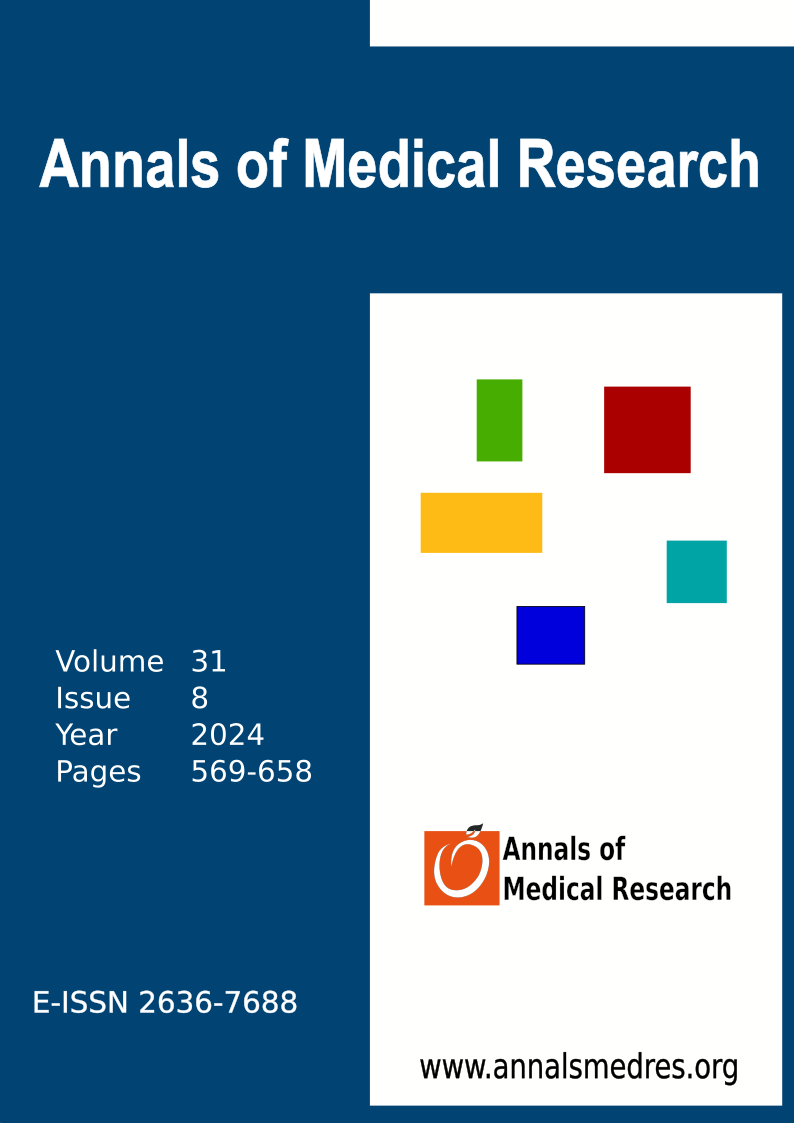Patellar fracture fixation using Wide-Awake Local Anesthesia No Tourniquet (WALANT): A novel method
Keywords:
Patellar fracture, Fixation, Wide-awake local anesthesia no tourniquet, PainAbstract
Aim: Patellar fractures, which account for approximately 1% of all fractures, frequently require surgical intervention for significant displacement. Traditional anesthesia methods pose various risks and complications, especially for patients with comorbidities. This study aims to evaluate the safety and feasibility of wide-awake local anesthesia no tourniquet (WALANT) for patellar fracture fixation.
Materials and Methods: A retrospective evaluation was conducted on a total of 8 patients who underwent patellar fracture fixation using the WALANT technique between 2020 and 2022. Patient demographics, clinical findings, and postoperative outcomes were collected. Peroperative pain was assessed using the Numerical Pain Rating Score (NPRS) and Visual Analogue Scale (VAS). Outcomes, including bleeding, complications, and the Lysholm Knee Score at 12 months postoperatively, were evaluated.
Results: The median age at surgery for a total of 8 patients, 6 males and 2 females, was 56 years (range: 38-73). The median surgery duration was 52 minutes (range, 38-73) , and postoperative pain onset was 160 minutes (range, 130-220). Minimal intraoperative bleeding was observed in most cases. Patient satisfaction with WALANT was high, with median VAS scores of 1 (range, 0-3) at 2 hours and 3 (range, 1-5) at 24 hours post-surgery. The median hospital stay was 2 (range, 1-7) days. One patient experienced a superficial skin infection. At 12 months postoperatively, the Lysholm Knee Score indicated satisfactory functional outcomes.
Conclusion: This study is the first to explore WALANT for patellar fracture fixation. WALANT provides safe, effective anesthesia, high patient satisfaction, effective pain management, and shorter hospital stays. It benefits patients with comorbidities and offers an alternative to traditional anesthesia. Further research is needed to validate these findings and support wider use.
Downloads
Published
Issue
Section
License
Copyright (c) 2024 The author(s)

This work is licensed under a Creative Commons Attribution-NonCommercial-NoDerivatives 4.0 International License.
CC Attribution-NonCommercial-NoDerivatives 4.0






